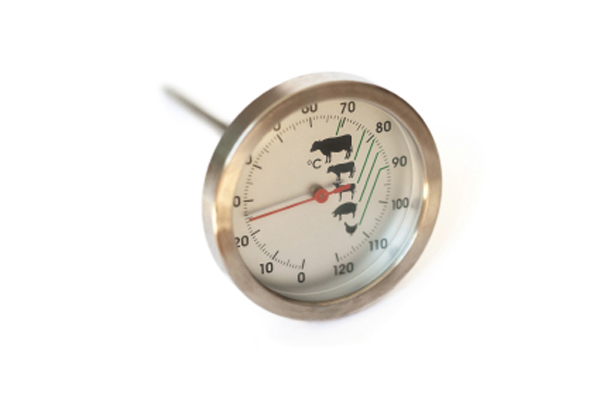Keep Community and Family Potlucks Safe This Season

It’s fall potluck season! Slow cookers, casseroles, and other hot dishes will be making their warm and welcome appearances.
Here’s an update on how to keep these foods hot and safe so no one leaves the festivities with a food bone illness.
Start with Cooking to the Safe Temp
Do you know what temperature the chicken or meatballs or casserole should be at to assure any bad bacteria are killed? Poultry and casseroles should be cooked to 165°F and ground meat should be cooked to 160°F. This USDA chart shows what temperature many common foods should be cooked to: http://bit.do/safefoodtemp
Use a food thermometer to check for doneness, because color or juices running clear are not reliable ways to tell if a food is safely cooked. In fact, depending on the kind of lighting you use and how the food is handled, food that is still undercooked may look done and vice versa. Be safe and sure by using a food thermometer.

How Do You Use a Food Thermometer?
Place the food thermometer in the thickest part of the food. It should not touch bone, fat, or gristle. Check the temperature toward the end of the cooking time, but before you expect it to be done. Be sure to clean your food thermometer with hot soapy water before and after each time you insert it into the food.
Keep Hot Foods Hot and Safe
Now that your foods are at the right temp, take steps to keep them safe: Wrap casserole dishes in aluminum foil. Keep it covered until just before serving. Put hot foods in an insulated bag or container for transport.
When you get to the potluck- plug in the slow cooker or other warning device to keep foods hot. No place to plug in? Hot food can safely be served without further heating for two hours after cooking. Then, for safety, it must be thrown out.
After two hours at room temperature, also known as the temperature danger zone, the bacteria has had a chance to grow to levels high enough to cause foodborne illness-– don’t risk it!
More Safety Tips for Potlucks
Be sure to wash hands before handling or serving food.
Make sure the table has been wiped clean and use utensils for serving so folks don’t have to touch the food with their hands.
Use long-handled utensils so the handles don’t fall into the food.
Feel proud about the steps you’ve taken to keep your food safe and delicious!
